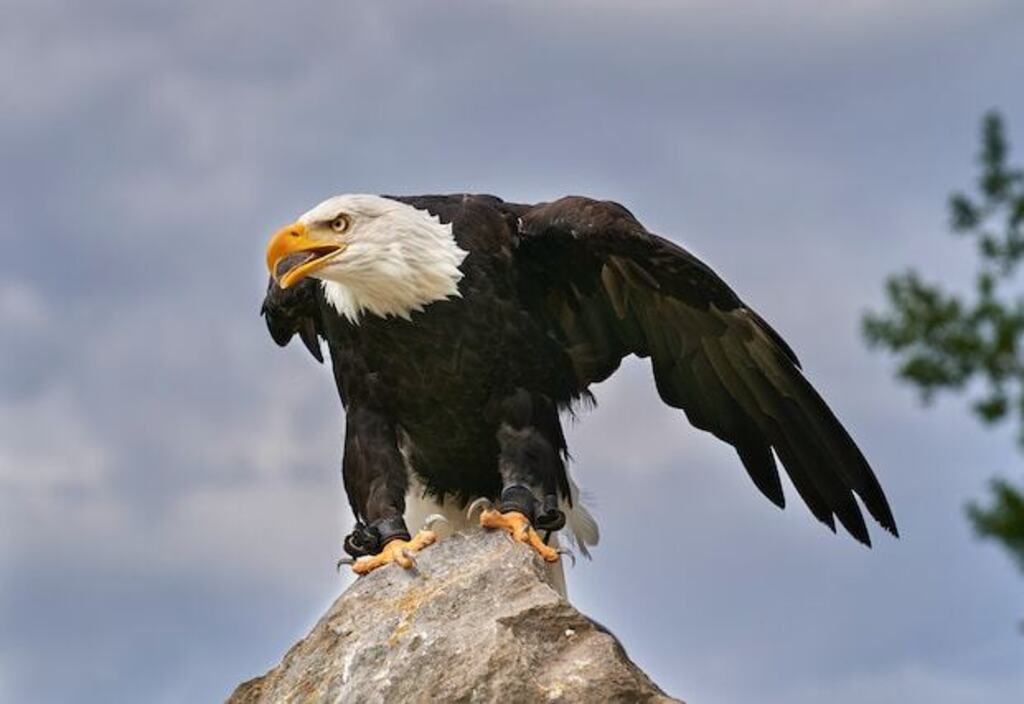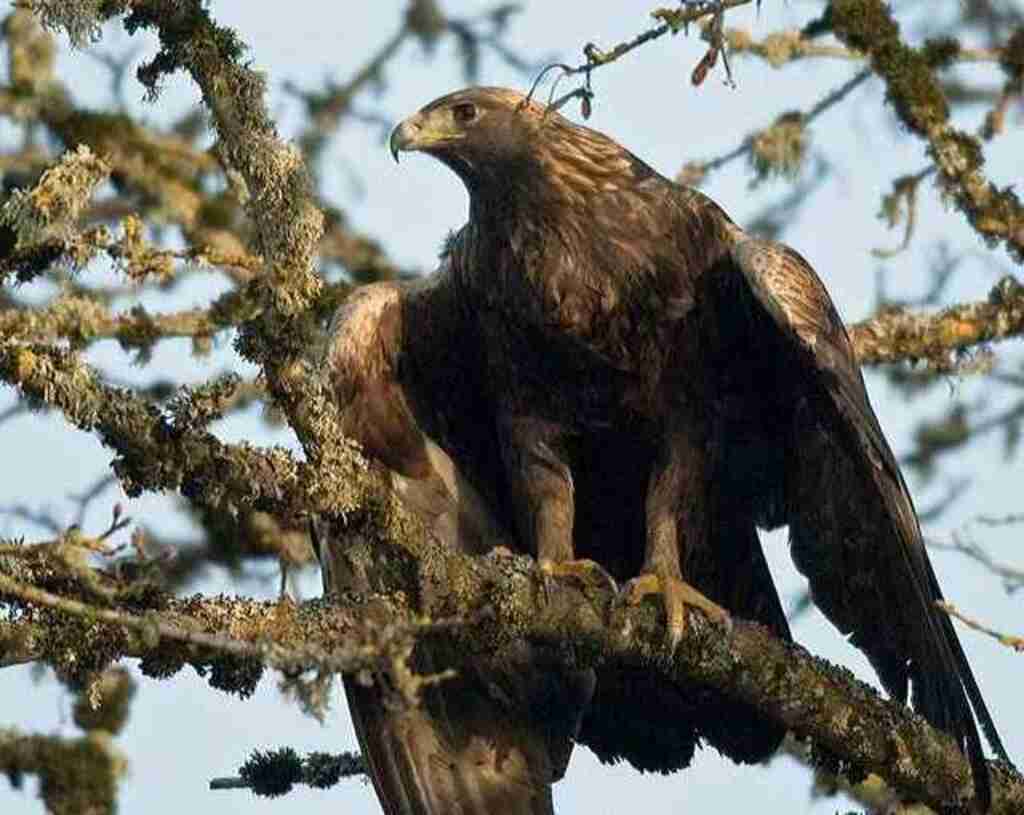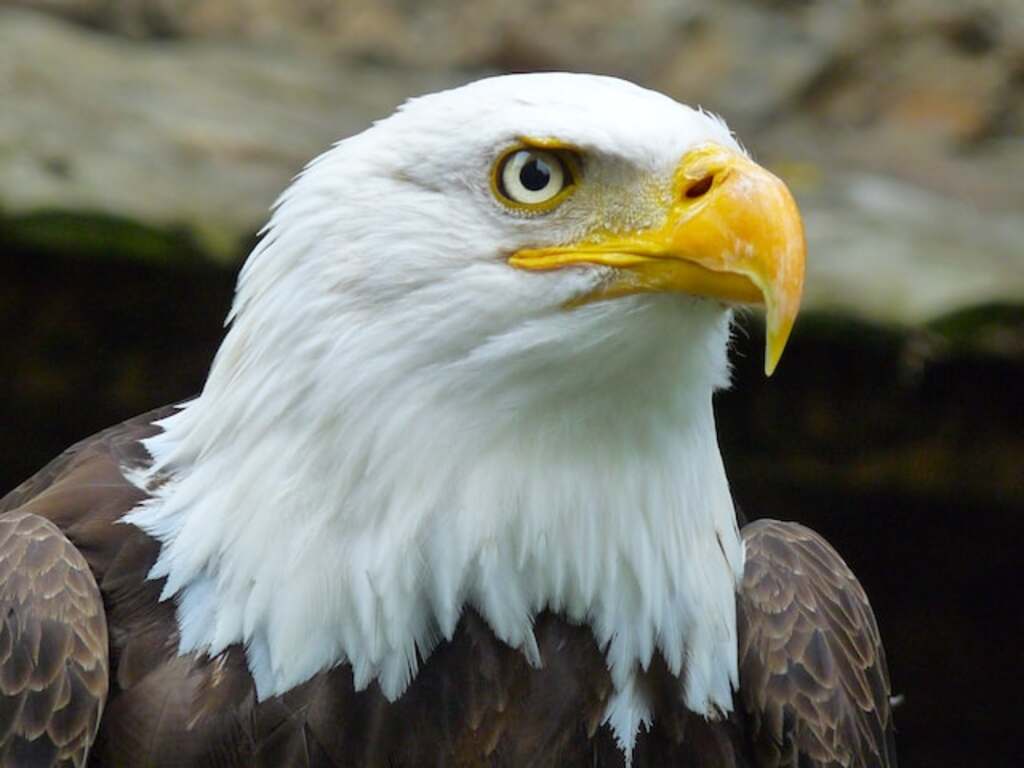In the heart of America’s identity lies a symbol of strength, freedom, and resilience: the eagle. Join us as we embark on a journey to unravel the significance of this iconic bird in American culture and history. From its majestic presence in national emblems to its profound symbolism in literature and art, we’ll explore the intricate layers of meaning behind the American eagle. Prepare to be inspired and enlightened as we delve deep into the essence of this enduring national emblem.
Table of Contents
- 1 Key Takeaways
- 2 Which Eagle Is The American Symbol
- 3 The Bald Eagle: A National Emblem
- 4 The Golden Eagle: A Majestic Predator
- 5 The Debate: Which Eagle Should be the American Symbol?
- 6 The Bald Eagle as the Official Symbol
- 7 The Golden Eagle as a Symbolic Contender
- 8 The Role of Both Eagles in American Identity
- 9 Frequently Asked Questions
- 9.1 Are there any other eagle species besides the bald eagle and the golden eagle that are considered for the American symbol?
- 9.2 What are the physical differences between the bald eagle and the golden eagle?
- 9.3 Is there any significance behind the specific colors and patterns on the feathers of the bald eagle and the golden eagle?
- 9.4 Are there any cultural or historical reasons why the bald eagle and the golden eagle are the main contenders for the American symbol?
- 9.5 How do the behaviors and hunting techniques of the bald eagle and the golden eagle differ?
- 10 Author
Key Takeaways
- The Bald Eagle was chosen as the national emblem of the United States in 1782, and the Golden Eagle also holds historical and cultural significance as a symbol of strength, courage, and freedom.
- Both eagles have played important roles in shaping cultural identities in Native American and Western cultures, symbolizing American patriotism, freedom, strength, and independence.
- Conservation efforts focus on protecting and preserving both Bald Eagles and Golden Eagles, as their conservation status is deeply intertwined with their cultural importance and their role in American identity.
- There is a debate over which eagle should be the American symbol, as the symbolic meaning and interpretation of eagles can vary among individuals and groups.
Which Eagle Is The American Symbol
The American symbol is the Bald Eagle. Chosen as the national emblem in 1782, the Bald Eagle represents freedom, strength, and resilience. With its iconic white head and tail, this majestic bird holds significant cultural and historical importance in the United States. 🦅🇺🇸
The Bald Eagle: A National Emblem
The Bald Eagle has long been revered as the quintessential symbol of American patriotism and strength. Its historical significance is rooted in the fact that it was chosen as the national emblem of the United States in 1782.
This decision was motivated by the eagle’s majestic appearance and its association with power and freedom.
Additionally, the Bald Eagle has had a significant impact on wildlife conservation efforts in the country.
Due to its symbolic status, the conservation of the Bald Eagle has become a priority, leading to the implementation of various protection measures.
These efforts have resulted in the successful recovery of the Bald Eagle population, which was once on the brink of extinction.
Transitioning to the subsequent section, the Golden Eagle: a majestic predator, we can explore another fascinating eagle species.
The Golden Eagle: A Majestic Predator
Renowned for its impressive wingspan, the Golden Eagle has been observed to reach speeds of up to 200 miles per hour during its high-speed dives.
This majestic predator, with its striking golden-brown plumage, holds both historical significance and ecological impact.
Historically, the Golden Eagle has been revered by various cultures as a symbol of strength, courage, and freedom.
Its presence in Native American folklore and ancient mythology further highlights its cultural importance.
Ecologically, the Golden Eagle plays a crucial role in maintaining the balance of ecosystems as a top predator, regulating prey populations and contributing to the overall health of the environment.
Its ability to adapt to diverse habitats and its preference for open, unobstructed landscapes have allowed it to thrive in various regions.
Transitioning into the subsequent section about the debate over which eagle should be the American symbol, it is essential to consider both the historical and ecological significance of these magnificent birds.
The Debate: Which Eagle Should be the American Symbol?
Considering the historical and ecological significance of both the bald eagle and the golden eagle, the debate emerges as to which magnificent bird should represent America.
The bald eagle, with its distinctive white head and tail, has been the official symbol of the United States since 1782.
Its association with freedom and strength makes it a fitting representation of the American spirit.
On the other hand, the golden eagle, known for its majestic appearance and powerful hunting skills, has also been considered as a potential symbol for the nation.
Proponents argue that the golden eagle’s broader range and larger size make it a more appropriate choice.
However, the bald eagle’s historical and cultural significance, as well as its established status as the American symbol, give it a strong advantage.
Transitioning to the subsequent section about ‘the bald eagle as the official symbol’, it is important to explore its historical journey and the reasons behind its selection.
The Bald Eagle as the Official Symbol
Transitioning from the debate about the representation of America to the subsequent section, it is crucial to delve into the historical journey and rationale behind the selection of the bald eagle as the official symbol.
The bald eagle, with its majestic appearance and impressive wingspan, has been chosen as a representation of the United States for several reasons.
Firstly, the bald eagle’s conservation status plays a significant role in its selection, as it symbolizes the country’s commitment to environmental preservation.
Secondly, the significance of eagle feathers in Native American culture adds to the bird’s cultural importance and symbolism.
Finally, the bald eagle’s strength and resilience align with the ideals of freedom and independence that America cherishes.
Transitioning into the subsequent section about the golden eagle as a symbolic contender, it is important to further explore the alternative perspectives.
The Golden Eagle as a Symbolic Contender
The Golden Eagle, like the Bald Eagle, holds historical and cultural significance as a symbol.
It has been revered in Native American and Western cultures for its majestic beauty and strength.
Additionally, the Golden Eagle plays a vital role in conservation and wildlife advocacy efforts, as its population has been threatened by habitat loss and human activities.
Historical and Cultural Associations
Historically, the bald eagle has long been recognized as the symbol of the United States of America. However, it is important to acknowledge that the golden eagle also holds significant historical and cultural associations.
Native American symbolism often attributes the golden eagle with qualities such as wisdom, courage, and spirituality.
Additionally, the golden eagle’s environmental impact cannot be overlooked. As a top predator, it plays a crucial role in maintaining the balance of ecosystems.
While the bald eagle’s symbolism is deeply rooted in American history and represents freedom and strength, it is worth exploring the rich cultural significance of the golden eagle as well.
Transitioning into the subsequent section about the use of eagles in Native American and Western culture, it becomes evident that both species have played important roles in shaping cultural identities.
Use in Native American and Western Culture
Symbolizing power and majesty, the eagle has been revered in both Native American and Western cultures, serving as an emblem of strength and spirituality.
In Native American symbolism, the eagle holds great significance and is often associated with the Great Spirit, representing the connection between the physical and spiritual worlds.
It is believed to possess the ability to soar to great heights and communicate with the divine.
In Western culture, the eagle has become synonymous with freedom and independence. It is often used as a symbol of national identity and pride, representing the ideals of liberty and democracy.
The eagle’s regal presence and impressive hunting skills have captivated the imagination of people throughout history.
Transitioning into the subsequent section about conservation and wildlife advocacy, the eagle’s cultural significance has also played a role in efforts to protect and preserve its habitat.
Conservation and Wildlife Advocacy
One important aspect of the eagle’s cultural significance is its role in conservation and wildlife advocacy efforts.
The American eagle, both the bald eagle and the golden eagle, have been the focus of extensive conservation efforts due to their symbolic importance and impact on ecosystems.
These efforts include habitat protection, population monitoring, and education programs aimed at promoting awareness and understanding of the eagles’ ecological role.
Conservation organizations and government agencies collaborate to implement measures such as the Endangered Species Act and the Bald and Golden Eagle Protection Act to safeguard these majestic birds and their habitats.
Additionally, conservation efforts extend beyond the American borders, as eagles migrate across international boundaries.
The conservation of eagles not only preserves a national symbol but also contributes to the overall health of ecosystems.
Transitioning into the subsequent section, the role of both eagles in American identity is deeply intertwined with their conservation status and cultural significance.
The Role of Both Eagles in American Identity
This discussion will focus on the role of both the Golden Eagle and the Bald Eagle in American identity.
Firstly, the dual representation of these eagles serves as a symbol of national pride, representing the strength and majesty of the United States.
Secondly, the symbolic meaning and interpretation of these eagles can vary among different individuals and groups, contributing to the complexity of their significance in American culture.
Lastly, the importance of protecting and preserving these eagles is paramount, as they not only symbolize American identity but also play a crucial ecological role in the ecosystem.
Dual Representation and National Pride
Representing both strength and freedom, the eagle holds a significant place as the national symbol of the United States, embodying the collective pride and identity of its citizens.
The dual representation of the eagle as a predator and a bird of prey resonates with the American spirit, symbolizing the nation’s ability to defend and protect itself while soaring above its adversaries.
This duality also reflects the complex nature of American identity, incorporating both power and grace, aggression and compassion.
The eagle’s majestic flight and keen vision mirror the aspirations and ideals of the American people, inspiring a sense of national unity and purpose.
Its presence on the Great Seal of the United States and various national emblems reinforces the eagle’s role as a unifying symbol of American patriotism.
Transitioning into the subsequent section about symbolic meaning and interpretation, the eagle’s significance extends beyond its physical attributes.
Symbolic Meaning and Interpretation
Symbolizing the essence of a nation’s values and aspirations, the eagle’s symbolic significance transcends its physical form, evoking a collective sense of purpose and unity.
The symbolic interpretations of the American eagle vary, but they all reflect the country’s ideals and historical significance. Here are three key interpretations:
- Freedom: The eagle is seen as a representation of freedom, liberty, and independence. It embodies the American spirit and the pursuit of individual rights.
- Strength: The eagle’s majestic presence and powerful flight symbolize the strength and resilience of the American people. It serves as a reminder of the nation’s ability to overcome challenges.
- National Pride: The eagle is a source of immense national pride. It is deeply ingrained in American culture and serves as a unifying symbol that fosters patriotism and a sense of belonging.
Understanding the symbolic meaning of the American eagle highlights its importance in American society. Protecting and preserving these magnificent creatures is vital to safeguarding the values they represent and ensuring their continued role as a symbol of American identity.
Importance of Protecting and Preserving Eagles
Moving on from the symbolic meaning and interpretation of the American eagle, it is now crucial to delve into the importance of protecting and preserving these majestic creatures.
Conservation efforts are of utmost significance due to the ecological role that eagles play in their respective ecosystems.
As apex predators, eagles help regulate populations of their prey species, thus maintaining a balanced ecosystem.
Additionally, eagles serve as indicators of environmental health, as their presence or absence can indicate the overall well-being of an ecosystem.
Furthermore, the conservation of eagles is essential for the preservation of biodiversity, as they contribute to the overall genetic diversity within their populations.
By safeguarding their habitats and implementing measures to mitigate threats such as habitat loss and pollution, we can ensure the long-term survival of eagles and the ecological integrity of their habitats.
Therefore, concerted conservation efforts are imperative to sustain the ecological significance of these iconic birds.
Frequently Asked Questions
Are there any other eagle species besides the bald eagle and the golden eagle that are considered for the American symbol?
Other potential American symbol candidates include the white-tailed eagle and the osprey. Eagle symbolism in different cultures also exists, such as the Roman aquila and the Aztec eagle. The choice of the American eagle symbol is a matter of historical and cultural significance.
What are the physical differences between the bald eagle and the golden eagle?
Differences in appearance between bald eagles and golden eagles include size, color, and beak shape. Golden eagles are larger, with brown feathers and a lighter head, while bald eagles have white feathers on their head and tail. In terms of hunting techniques, bald eagles primarily hunt fish while golden eagles hunt small mammals and birds.
Is there any significance behind the specific colors and patterns on the feathers of the bald eagle and the golden eagle?
The significance of feather colors in bald and golden eagles lies in their symbolism in different cultures. The colors and patterns on their feathers are associated with strength, power, and freedom, making them highly regarded in various societies around the world.
Are there any cultural or historical reasons why the bald eagle and the golden eagle are the main contenders for the American symbol?
Cultural significance and historical background contribute to the prominence of the bald eagle and golden eagle as contenders for the American symbol. These majestic birds embody national pride, strength, and freedom, reflecting the values cherished by the American people throughout history.
How do the behaviors and hunting techniques of the bald eagle and the golden eagle differ?
Differences in hunting behavior between the bald eagle and the golden eagle lie in their preferred prey and hunting techniques.
The bald eagle primarily feeds on fish, using its sharp talons to snatch them from water, while the golden eagle hunts a wider range of mammals and birds, relying on its speed and agility to capture its prey.
In terms of nesting habits, both eagles build large nests in high places, but the bald eagle tends to prefer nesting near water, while the golden eagle chooses more remote and inaccessible locations.







